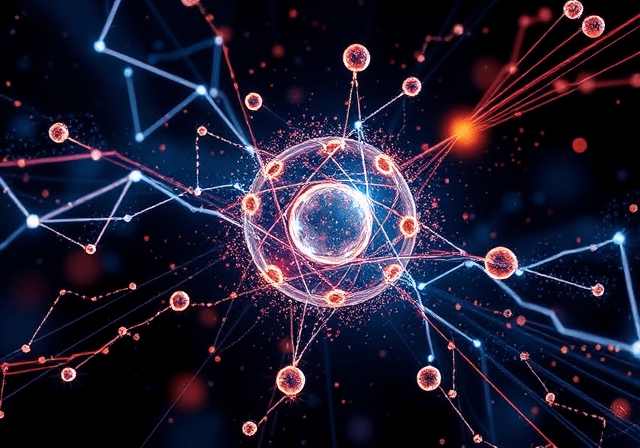Quantum Mechanics: Exploring the Intricacies of Matter and Energy

Quantum mechanics is the cornerstone of modern physics, delving into the behavior of matter and energy at the smallest scales. This groundbreaking field, developed in the early 20th century, has revolutionized our understanding of the universe, thanks to pioneers like Max Planck, Albert Einstein, Niels Bohr, and Werner Heisenberg. It complements our understanding of classical mechanics, as described in the Laws of Motion, by explaining phenomena at the atomic and subatomic levels.
Key Concepts in Quantum Mechanics
1. Wave-Particle Duality
Particles such as electrons exhibit both wave-like and particle-like properties, a phenomenon best illustrated in the famous double-slit experiment. This duality has implications for how we understand energy and thermodynamics at the quantum level.
2. Heisenberg’s Uncertainty Principle
It is fundamentally impossible to measure both the exact position and momentum of a particle simultaneously with infinite precision.
3. Superposition
Quantum systems can exist in multiple states at once, a principle central to quantum computing.
4. Entanglement
When particles become entangled, their states remain interconnected regardless of the distance separating them. This "spooky action at a distance" puzzled even Einstein.
5. Quantization
Energy is not continuous but exists in discrete packets called quanta, challenging classical notions of continuity.
Foundational Theories
Schrödinger Equation
A fundamental equation describing how the quantum state of a system changes over time.
Heisenberg Uncertainty Principle
Quantifies the limits of simultaneous precision for certain pairs of physical properties, like position and momentum.
Dirac Equation
An extension of quantum mechanics to relativistic speeds, explaining the behavior of particles like electrons and predicting antimatter. This connects to Einstein's theories of Relativity.
Quantum Field Theory (QFT)
A unified framework combining quantum mechanics and special relativity, describing how particles and forces interact through fields. This relates to the concept of Fundamental Forces.
Real-World Applications
Electron Spin
The intrinsic angular momentum of electrons powers technologies like MRI machines, enabling advanced medical imaging.
Quantum Computing
Harnessing principles like superposition and entanglement, quantum computers solve complex problems beyond the reach of classical systems.
Particle Accelerators
Facilities like CERN’s Large Hadron Collider use quantum mechanics to probe the fundamental constituents of matter, driving discoveries in physics and beyond.
Interactive Quiz: Test Your Knowledge
1. What is wave-particle duality?
- a) The ability of particles to exhibit both wave-like and particle-like behavior.
- b) The ability of particles to exhibit only wave-like behavior.
- c) The ability of particles to exhibit only particle-like behavior.
- d) The ability of particles to exhibit neither wave-like nor particle-like behavior.
Answer: a) The ability of particles to exhibit both wave-like and particle-like behavior.
2. What does the uncertainty principle state?
- a) It is impossible to know both the position and momentum of a particle with infinite precision.
- b) It is possible to know both the position and momentum of a particle with infinite precision.
- c) It is impossible to know the position of a particle with infinite precision.
- d) It is impossible to know the momentum of a particle with infinite precision.
Answer: a) It is impossible to know both the position and momentum of a particle with infinite precision.
3. What is entanglement?
- a) The phenomenon where two or more particles are interconnected regardless of the distance between them.
- b) The phenomenon where two or more particles become disconnected.
- c) The phenomenon where particles exist in multiple states simultaneously.
- d) The phenomenon where particles lose all correlation.
Answer: a) The phenomenon where two or more particles are interconnected regardless of the distance between them.
Quantum mechanics continues to challenge our understanding of reality, offering insights and technologies that reshape our world. From the tiniest particles to vast cosmic phenomena, the quantum realm remains a frontier of endless exploration.
Further Exploration
To delve deeper into the fascinating world of quantum mechanics, we recommend the following books:
- Quantum Mechanics: The Theoretical Minimum by Leonard Susskind: A great introductory text for those with a mathematical background.
- In Search of Schrödinger's Cat by John Gribbin: A more accessible and engaging exploration of quantum concepts.
- Quantum Mechanics: Concepts and Applications by Zettili: A more advanced textbook for those pursuing a deeper understanding.
Table of Contents
- Quantum Mechanics: Exploring the Intricacies of Matter and Energy
- Key Concepts in Quantum Mechanics
- 1. Wave-Particle Duality
- 2. Heisenberg’s Uncertainty Principle
- 3. Superposition
- 4. Entanglement
- 5. Quantization
- Foundational Theories
- Schrödinger Equation
- Heisenberg Uncertainty Principle
- Dirac Equation
- Quantum Field Theory (QFT)
- Real-World Applications
- Electron Spin
- Quantum Computing
- Particle Accelerators
- Interactive Quiz: Test Your Knowledge
- 1. What is wave-particle duality?
- 2. What does the uncertainty principle state?
- 3. What is entanglement?
- Further Exploration
Related Posts

Explore the principles of energy and thermodynamics. Learn about energy conservation, entropy, and the laws governing energy transfer and transformations.

Fundamental forces of nature explained: Gravity, electromagnetic force, strong nuclear force, weak nuclear force. Learn about their properties, range, strength, and mediating particles.

Learn how objects move with our guide to Newton's Laws of Motion. Discover the principles of inertia, force, and acceleration, and see how they apply in everyday life.

Dive into Einstein's groundbreaking theories of relativity and understand how they shape our understanding of the universe.